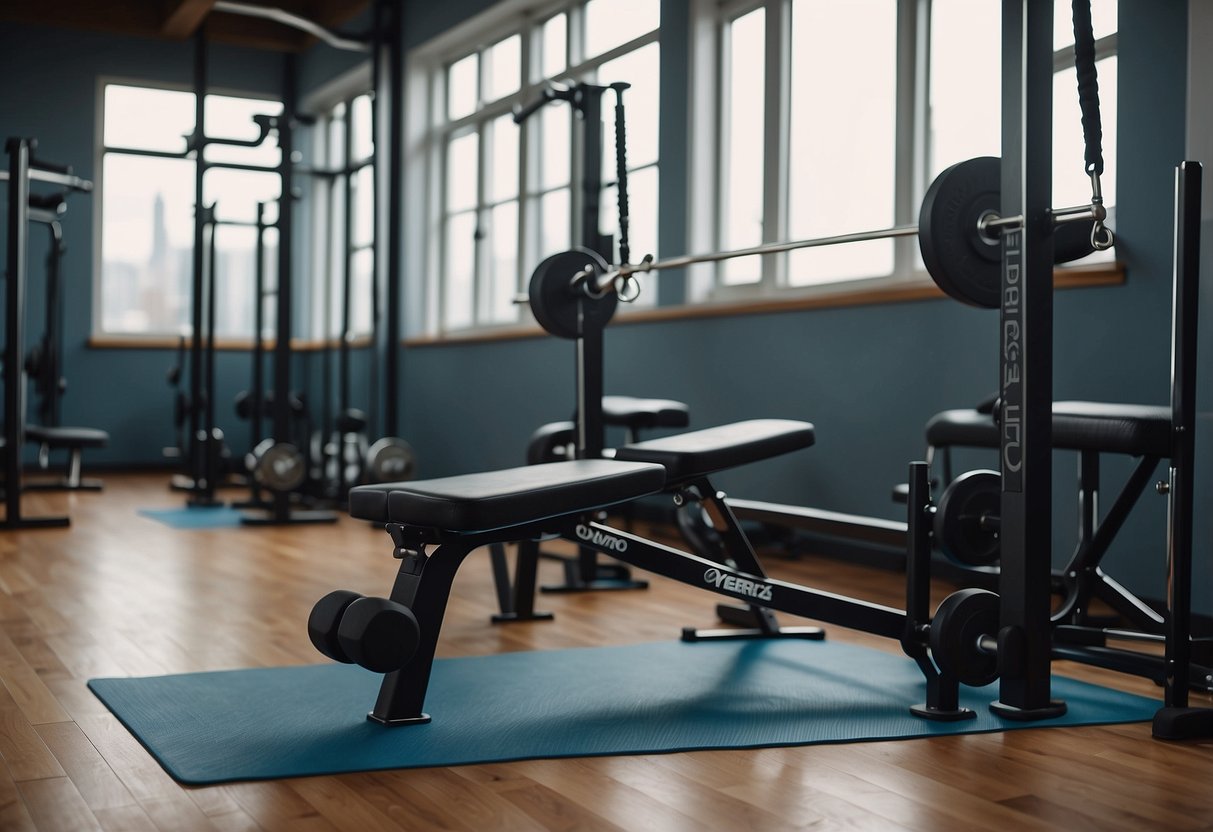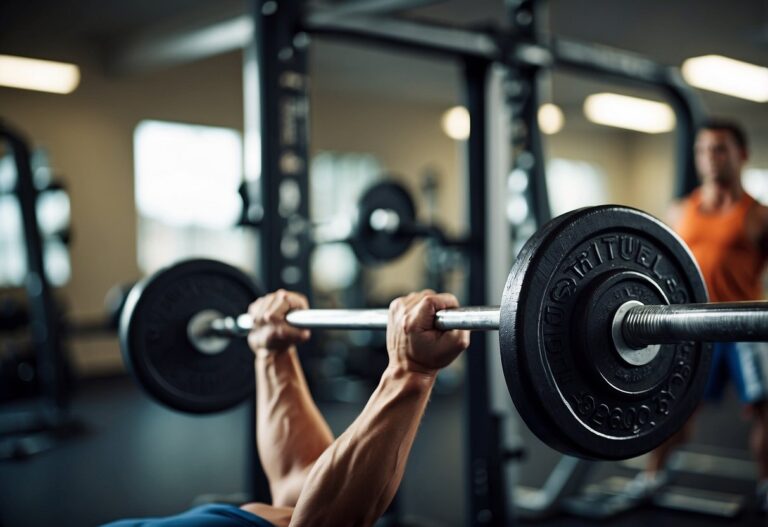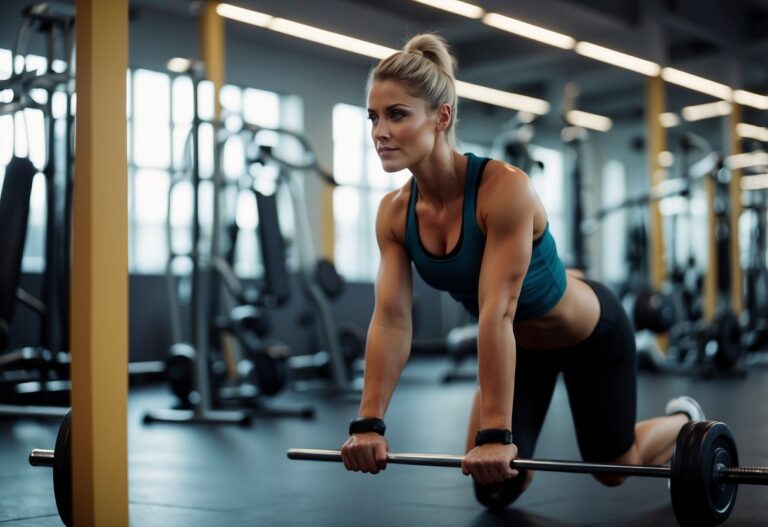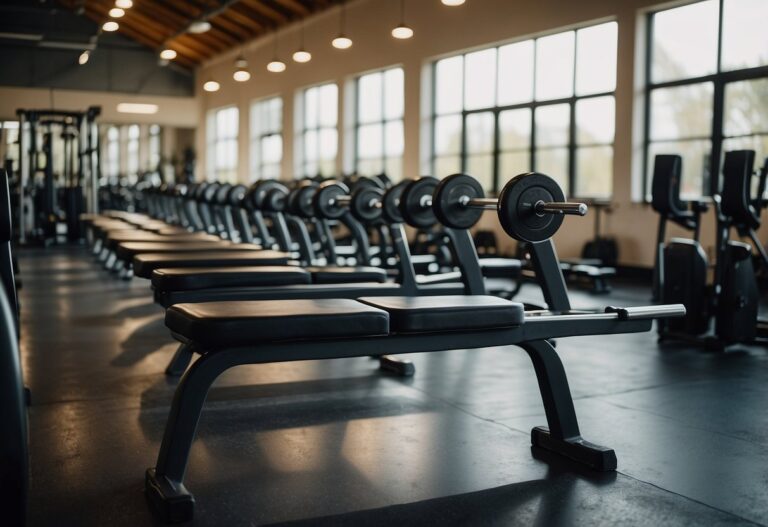Building muscle and strength in your chest can be a game-changer for your overall fitness. Whether you’re looking to improve your bench press or just want a more defined chest, it’s essential to know the best exercises and techniques. What are the key tips to maximise your chest workouts? This article will guide you through effective strategies to boost your chest training results.

Chest workouts are not just about lifting heavy weights. There’s a lot more to consider, like proper form, varied exercises, and incorporating different training methods. By understanding these elements, you can take your chest workouts to the next level and achieve your fitness goals faster.
Incline Bench Press
The incline bench press is great for targeting your upper chest. To set up, adjust the bench to a 30-45 degree angle. This helps to isolate the upper part of the pectoral muscles.
When lying on the bench, pull your shoulder blades back and squeeze them together. This stabilises your upper body and ensures proper form.
Take a controlled, deep breath. Lower the bar to your upper chest while keeping your elbows at a 45-degree angle. This helps to engage your chest muscles effectively.
Focus on a slow and controlled movement. Pushing the bar back up should be a steady motion to fully activate the muscle group.
For beginners, starting with lighter weights can help you get used to the form. As you get stronger, gradually increase the weight. Always make sure you have a spotter, especially when lifting heavier loads.
Incorporate the incline bench press into your chest or upper body workouts. Doing this exercise at the beginning of your routine, when you’re fresh, allows you to lift heavier and maximise muscle activation.
Using the incline bench press can help you overcome weaknesses in your upper chest, which for many is a lagging part in their development.
Flat Bench Dumbbell Press
The Flat Bench Dumbbell Press is a must-have for any chest workout. It works your chest muscles and helps build strength.
To start, lie flat on a bench and hold a dumbbell in each hand. Your feet should be flat on the ground.
As you press the dumbbells up, keep your movements controlled. Lower the weights slowly back to your chest. This helps to engage your muscles fully.
It’s also important to keep your shoulder blades pulled back into the bench. This improves stability and focus on your chest muscles.
Remember to breathe out when pushing the weights up and breathe in when lowering them. This maintains proper breathing and enhances performance.
Using a proper form reduces the risk of injury. Always focus on technique over lifting heavier weights.
Cable Chest Fly
The cable chest fly is a great way to target your chest muscles. This exercise works the pectoralis major, minor, and other muscle groups in your upper body.
To perform a cable chest fly, start by standing between two cable machines. Grab the handles with a slight bend in your elbows. Pull your hands together in front of you, leading with your pinkies to really engage your chest.
For more details on the correct form, you can check out this guide.
Push-Up Variations
Push-ups are a fantastic way to build chest muscles without needing equipment. There are several variations to target different muscle groups and increase difficulty.
Wide Grip Push-Ups focus more on working your chest by placing your hands wider than shoulder-width. This reduces tricep and shoulder involvement. If you want to make it tougher, you can try doing them on an incline.
Diamond Push-Ups are great for targeting your triceps. Form a diamond shape with your hands under your chest and lower your body slowly. This movement demands more from your triceps and chest.
For a full-body challenge, try T-Pushups. Start in a regular push-up position, raise one hand to the sky forming a T-shape, then switch sides. Adding dumbbells can increase the intensity.
Using these variations can help you target different muscles and add variety to your workout. Remember to maintain proper form to prevent injury and get the most out of each exercise. You can find more detailed instructions on these exercises here and here. Try incorporating these into your routine for a more comprehensive chest workout.
Chest Dips
Chest dips are a fantastic exercise for building upper body strength. You’ll engage your chest, triceps, and shoulders with this move. When performing chest dips, lean slightly forward to increase the activation of your chest muscles.
To start, grab the parallel bars and lift yourself up. Slowly lower your body until your elbows are at a 90-degree angle. Remember to keep your shoulders back and down to avoid injury.
Adding weight can make chest dips more challenging. If you can do 15 or more reps easily, try using a weight belt. This will help you progress and build more muscle.
For beginners, bodyweight dips might be tough. If that’s the case, use an assisted dip machine or resistance bands to lighten the load. This allows you to master the form before taking on the full bodyweight exercise.
Include chest dips in your regular strength training routine to see noticeable improvements in your chest size and strength. Want a strong, defined chest? Dips are the way to go.
Decline Bench Press
The decline bench press is a powerful exercise for targeting your lower chest muscles.
Start by lying back on the decline bench and locking your feet under the pad. This stops you from sliding during the exercise. Make sure to grip the bar just wider than shoulder-width apart.
Before lifting the bar, squeeze your shoulder blades together, raise your chest, and tighten your core. This sets a strong, stable base. Next, unrack the bar and lower it to mid-chest level, keeping your arms at about a 45-degree angle to your torso.
Press the bar back up to the starting position while keeping control. This movement focuses on the lower part of your chest, helping build strength and definition. Consistency is key—mix the decline bench press into your routine regularly for the best results. For more tips, check out this comprehensive guide.
Pec Deck Machine
The pec deck machine is a fantastic tool for isolating your chest muscles. When you sit on the machine, ensure your back and bum are pressed firmly against the pad. Adjust the seat height so that your elbows are at the same level as your shoulders.
Grip the handles firmly. As you bring your arms together, focus on squeezing your chest muscles. This helps to maximise the effectiveness of the exercise. Use a controlled motion to avoid swinging or using momentum, which can reduce the exercise’s benefits.
As with any exercise, it’s important to start with a weight that you are comfortable with. Gradually increase the weight as you become stronger. The pec deck is great for targeting the pectoral muscles, making it ideal for building a well-defined chest.
For variety, consider incorporating light dumbbell flyes into your routine. This variation mimics the pec deck motion and can help add more definition to your chest. Remember to keep your form correct to avoid any injuries and ensure you get the most out of your workout.
Dumbbell Pullover
If you’re looking to add some variety to your chest workout, consider the dumbbell pullover. This exercise targets your chest and can also help engage your back muscles.
First, grab a dumbbell with both hands. Lay back on a bench with your feet flat on the ground. Your upper back, neck, and head should be supported by the bench.
Hold the dumbbell over your chest with your arms slightly bent. Slowly lower the weight behind your head while keeping your arms straightened. Make sure to keep your core engaged and your back strong.
Breathe in as you lower the weight and exhale as you lift it back over your chest. This helps maintain a steady and controlled movement. Try to complete several repetitions, keeping the form consistent. For more on this technique, check this detailed guide.
Incorporating the dumbbell pullover can be a great way to enhance both your chest and back training routine. Consider giving it a try next time you’re at the gym.
Resistance Band Chest Press
The resistance band chest press is a great way to build upper body strength at home. Unlike weights, resistance bands are portable and easy to store.
Start by securing the band behind you, either looping it around a sturdy object or holding it yourself. Stand with one foot forward for balance.
Push the bands forward, keeping your core engaged. Don’t lock your elbows. Slowly return to the starting position, focusing on your chest muscles. For more tips, check out this detailed guide.
Barbell Bench Press
The barbell bench press is a classic exercise that targets your chest, shoulders, and triceps.
Start by lying flat on a bench with your head under the bar. Grip the bar with an overhand, shoulder-width grip. Ensure your feet are firmly on the ground and your knees bent.
Take a deep breath and squeeze the bar tight. This helps activate your muscles and keeps you stable.
When you lower the bar, keep control and aim to touch your chest lightly before pushing back up. Avoid bouncing the bar off your chest.
Focus on form. Keep your shoulder blades squeezed and your entire body tight throughout the lift. This helps maintain stability and maximises muscle engagement.
To see progress, regularly increase the weight you lift. Always use proper form and safety measures.
Explore different variations like the incline bench press or decline bench press to work your muscles from different angles.
Benefits Of Chest Workouts
Engaging in chest workouts offers significant advantages, including muscle growth and improved posture. These benefits help you achieve a well-rounded physique and enhance your daily life activities.
Muscle Growth
Chest workouts play a crucial role in building muscle mass. By executing exercises like bench presses, push-ups, and dumbbell flyes, you target the pectoral muscles. These muscles become stronger and more defined with consistent training.
Including compound movements, such as bench presses, enhances muscle growth as these exercises engage multiple muscle groups. For instance, bench presses not only work your chest but also your shoulders and triceps. To maximise muscle gains, consider integrating various bench press techniques into your routine.
Training your chest muscles also boosts your overall strength. Functional movements become easier, from lifting groceries to pushing heavy objects. Strength-building exercises, like the ones mentioned, help increase muscle thickness, making your chest appear broader and more powerful.
Enhanced Posture
Improved posture is another benefit of regular chest workouts. Strengthening your chest muscles can correct a hunched back and promote a more upright stance. Exercises that focus on the upper chest and shoulders, such as the pinch press, reinforce this improvement.
Balanced chest and back workouts are essential to maintain good posture. While working on your chest, don’t neglect your back muscles. Ensuring both muscle groups are equally trained helps prevent muscle imbalances, which can lead to poor posture and discomfort.
Enhanced posture also contributes to a more confident appearance. Standing tall with your shoulders back can make a significant difference in how you carry yourself daily. Whether at work, school, or social settings, good posture leaves a positive impression and improves your overall well-being.
Anatomy Of Chest Muscles
Understanding the chest muscles helps to target specific areas during workouts for maximum gains. The two main chest muscles are the Pectoralis Major and the Pectoralis Minor.
Pectoralis Major
The Pectoralis Major is the largest chest muscle. It has two parts: the clavicular head (upper pecs) and the sternal head (lower pecs). This muscle helps in movements like pushing, lifting, and rotating your arm.
You use it during exercises like the incline dumbbell press and the flat bench press. Targeting the upper chest can be done by pressing at an incline, which activates the clavicular head more effectively.
To give your lower chest a workout, focus on decline presses and movements that bring your arms downward. This ensures a balanced development across both parts.
Pectoralis Minor
The Pectoralis Minor is a thin, triangular muscle located underneath the Pectoralis Major. This smaller muscle helps move your shoulder blades and assists with deep-breathing movements.
Exercises like push-ups and dips work this muscle indirectly. Standing cable flyes also engage the Pectoralis Minor because they involve shoulder movement.
To think about how the Pectoralis Minor works, imagine lifting a heavy box from the ground. Your shoulders and upper arms engage, thanks to this muscle stabilising the shoulder blade. Keeping this muscle strong is key for overall shoulder health and function.
Common Mistakes To Avoid
In chest workouts, avoiding common mistakes can help you get better results and avoid injuries. Here are key errors to steer clear of, along with tips on how to fix them.
Poor Form
Using poor form during chest exercises can lead to injuries and less effective workouts. Many people perform exercises such as the bench press with their elbows flared out too wide. This puts extra strain on your shoulders and can lead to shoulder injuries.
Instead, keep your elbows at a 45-degree angle to your body. This helps engage your chest muscles more effectively. Additionally, arching your back excessively when lifting heavier weights can be problematic. You should maintain a slight arch in your lower back but ensure that your back is pressed against the bench for stability.
Don’t forget to check your hand placement. Your grip should be just wider than shoulder-width apart. This helps to properly target your chest muscles and avoid undue strain on your wrists.
Overtraining
Focusing too much on your chest and neglecting other muscle groups is a common issue. Overtraining can lead to muscle imbalances and increase the risk of injury. It’s tempting to work the chest frequently to see gains quickly.
However, giving your muscles time to recover is crucial. Aim to train your chest no more than twice a week. This allows muscle fibres to heal and grow, making your chest stronger and more defined.
Incorporating exercises for your back, like rows and pull-ups, ensures balance. This helps keep your shoulders in a healthy position and supports overall muscle growth. Remember, better technique trumps higher frequency every time.







